The Development of the Differential MEMS Vector Hydrophone
Abstract
:1. Introduction
2. Design
3. Theory and Simulation Analysis
3.1. Theory Analysis
3.2. Simulation Analysis
4. Construction and Testing
4.1. Acoustical Transmission Theory
4.2. Test
4.2.1. Tests in the Standing Wave Tube
4.2.2. Tests on the Vibration Platform
5. Conclusions
Acknowledgments
Author Contributions
Conflicts of Interest
References
- Xue, C.Y.; Chen, S.; Zhang, W.D. Design, Fabrication, and Preliminary Characterization of a Novel MEMS Bionic Vector Hydrophone. Microelectron. J. 2007, 38, 1021–1026. [Google Scholar] [CrossRef]
- Zhao, P.; Zhang, G.J.; Liu, Y.; Shen, H.; Liu, L.X.; Zhang, W.D. The Design of Pressure-Resisting Structure for NEMS Vector Hydrophone. Chin. J. Sens. Actuators 2014, 5, 610–615. [Google Scholar]
- Zhang, G.-J.; Chen, S.; Xue, C.-Y. Encapsulation of a Bionic hair cell vector hydrophone based on MEMS. Nanotechnol. Precis. Eng. 2009, 7, 221–227. [Google Scholar]
- Zhu, L.; Li, F.; Chen, D. Study of vector noise field characteristics in shallow water by fiber optical vector hydrophone. Tech. Acoust. 2016, 32, 101–108. [Google Scholar]
- Li, D.; Cao, J.; Liu, Y. Reduction of Acceleration Sensitivity of Fiber Optic Hydrophone. J. Harbin Eng. Univ. 2001, 22, 25–32. [Google Scholar]
- Kang, K.; Gabrielson, T.B.; Lauchle, G.C. Development of an accelerometer-based underwater acoustic intensity sensor. J. Acoust. Soc. Am. 2004, 116, 3384–3392. [Google Scholar]
- Liu, X.; Zhang, G.; Guan, L. The design of a vector hydrophone’s chip-level damping structure. In Proceedings of the 2011 3rd International Conference on Computer Research and Development, Shanghai, China, 11–13 March 2011; pp. 358–360. [Google Scholar]
- Guo, N.; Zhang, G.J.; Zhang, W.D. Design and experiment research on MEMS vector hydrophone vibration damping structure. Key Eng. Mater. 2015, 645, 931–941. [Google Scholar] [CrossRef]
- Tao, S.; Bai, H.; Liu, Z. The Algorithm Design of New Robust Controller in Micro-vibration Isolation Platform. Mech. Sci. Tech. Aerosp. Eng. 2013, 32, 1518–1523. [Google Scholar]
- Zhang, X.; Tan, J.; Zhou, J. Study on aging of an elastomeric gasket material in simulated PEMFC environments. Chin. J. Power Sources 2015, 4, 759–762. [Google Scholar] [CrossRef]
- Jian, Z.M.; Zhang, G.J.; Liu, M.R. Microstructure optimization design of MEMS bionic vector hydrophone. Micronanoelectron. Technol. 2014, 51, 576–582. [Google Scholar]
- Zhang, G.J.; Zhao, P.; Zhang, W.D. Resonant frequency of the silicon micro-structure of MEMS vector hydrophone in fluid-structure interaction. AIP Adv. 2015, 5, 041316. [Google Scholar]
- Chen, S. Research of MEMS Bionic Vector Hydrophone Based on Silicon. Ph.D. Thesis, North University of China, Taiyuan, China, 2008. [Google Scholar]
- The Table of Density, Acoustic Impedance and Sound Velocity of Common Material. Available online: http://www.fm369.cn/inforQuestiondetail.aspx?id=8769 (accessed on 5 August 2010).
- Liu, M.R.; Jian, Z.M.; Zhang, G.J. Design of MEMS Bionic Vector Hydrophone Based on NBR sound-transparent Cap. Sens. Rev. 2015, 35, 303–309. [Google Scholar] [CrossRef]
- Du, G.H.; Zhu, Z.M.; Gong, X.F. Acoustic Foundation; Nanjing University Press: Nanjing, China, 2001. [Google Scholar]
- Fei, T. Vector Hydrophone Calibration Equipment. Available online: http://www.docin.com/p-507943038.html (accessed on 6 June 2017).
- Zhen, S.J.; Yuan, W.J.; Liao, R.X. Acoustic Measurement and Testing Technology; Harbin Institute of Technology Press: Harbin, China, 1995. [Google Scholar]
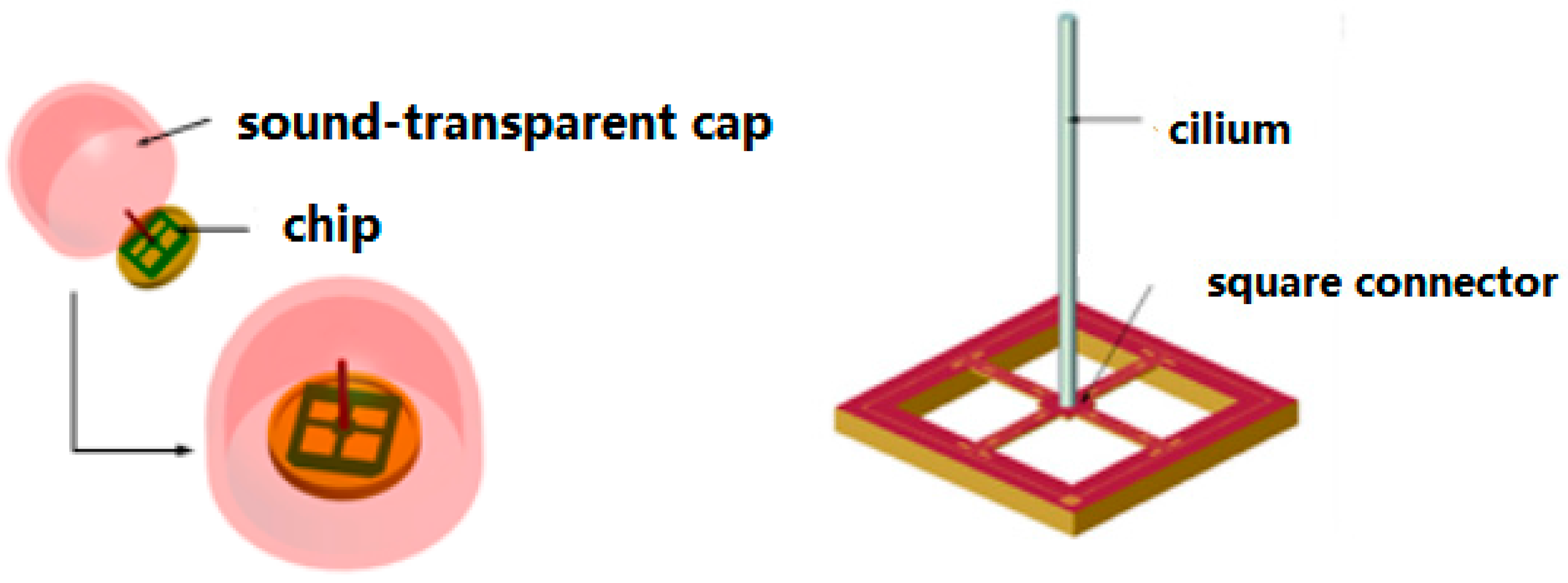

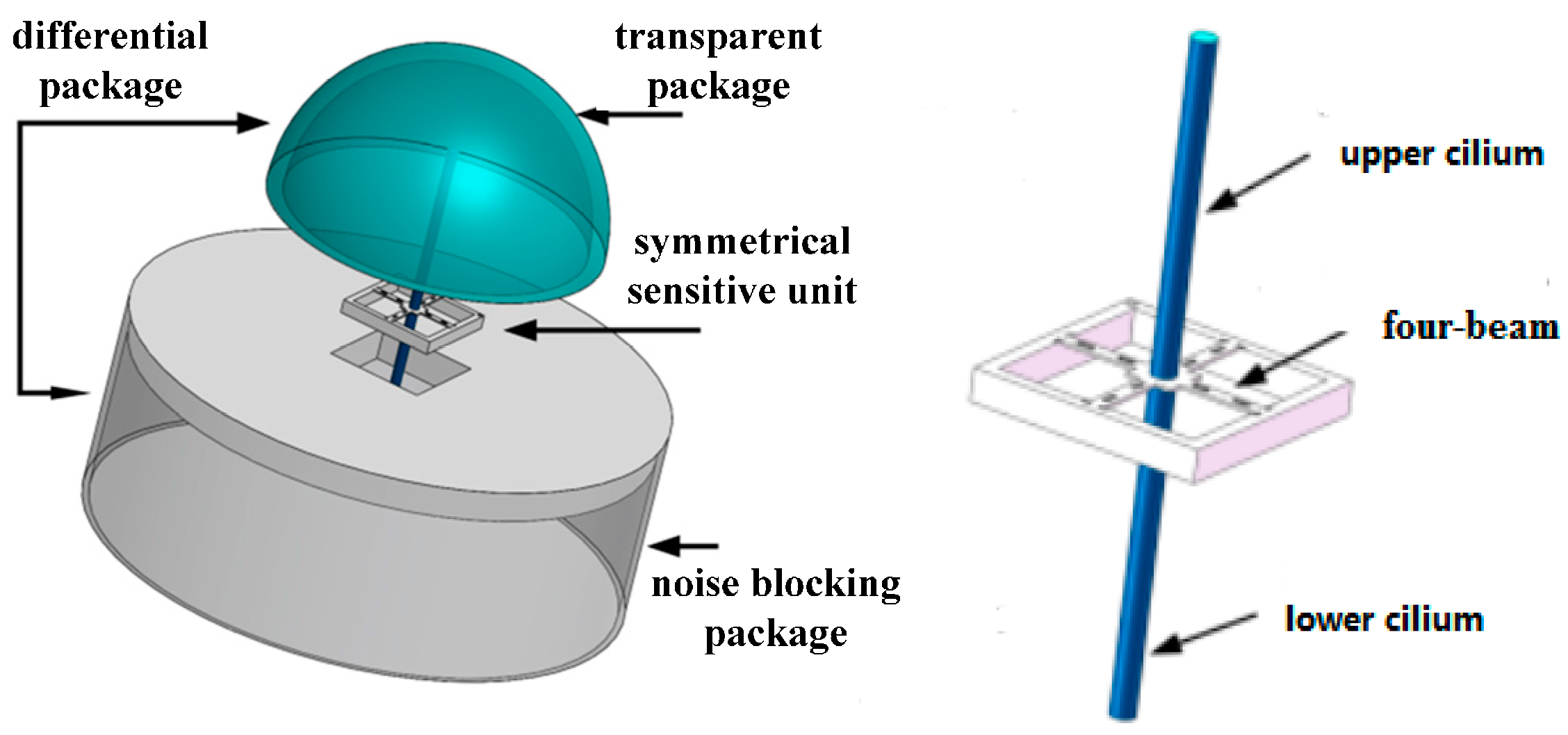
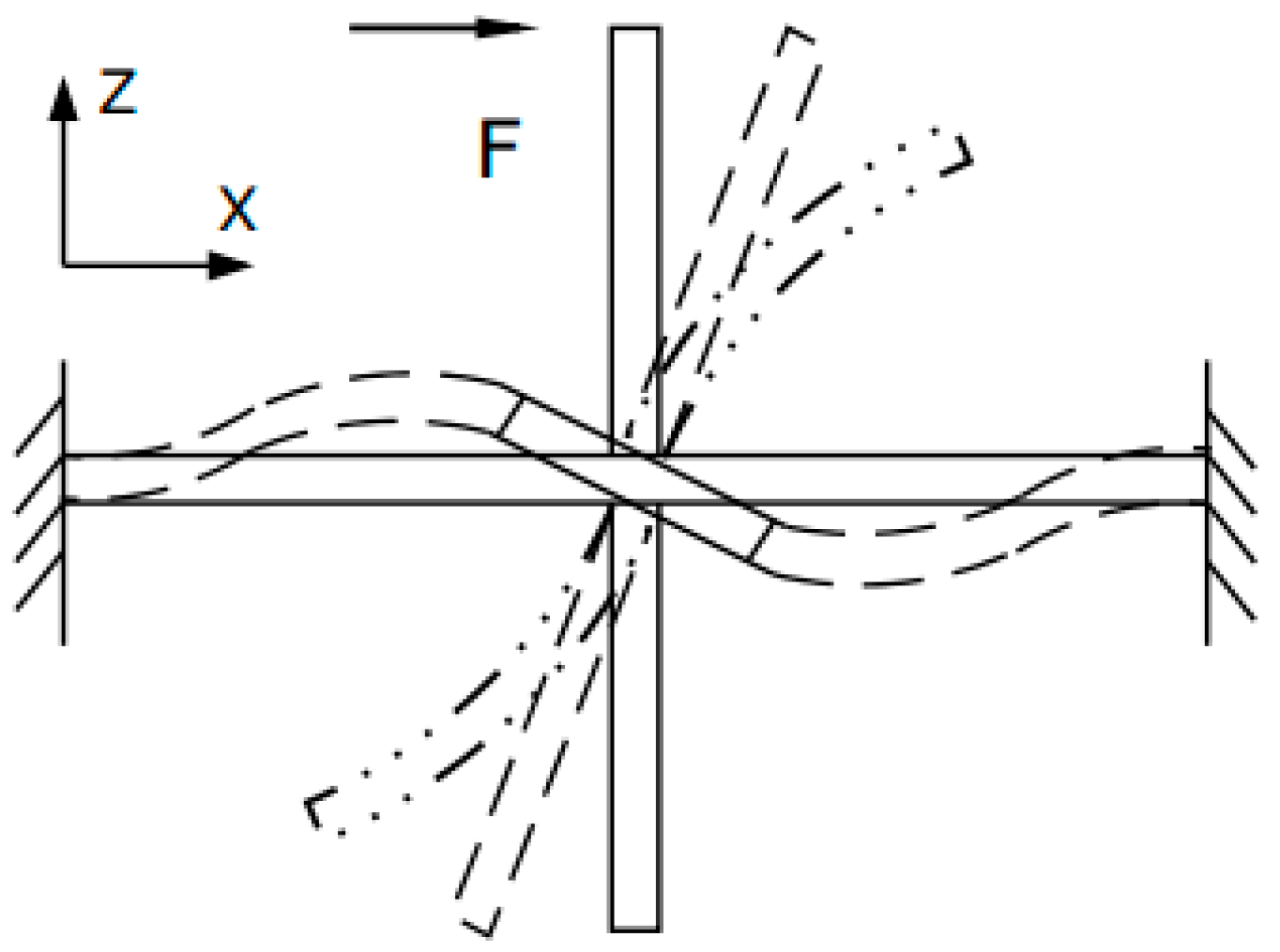
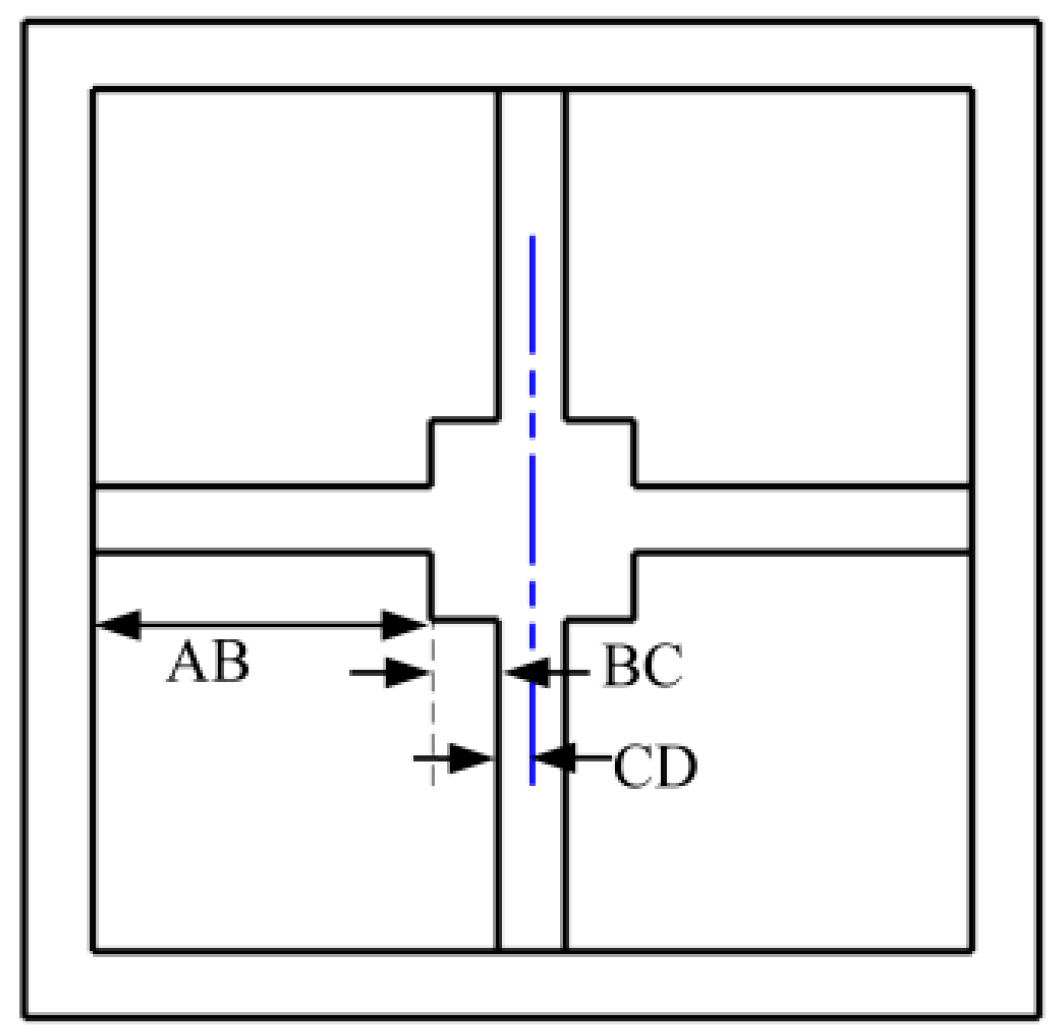
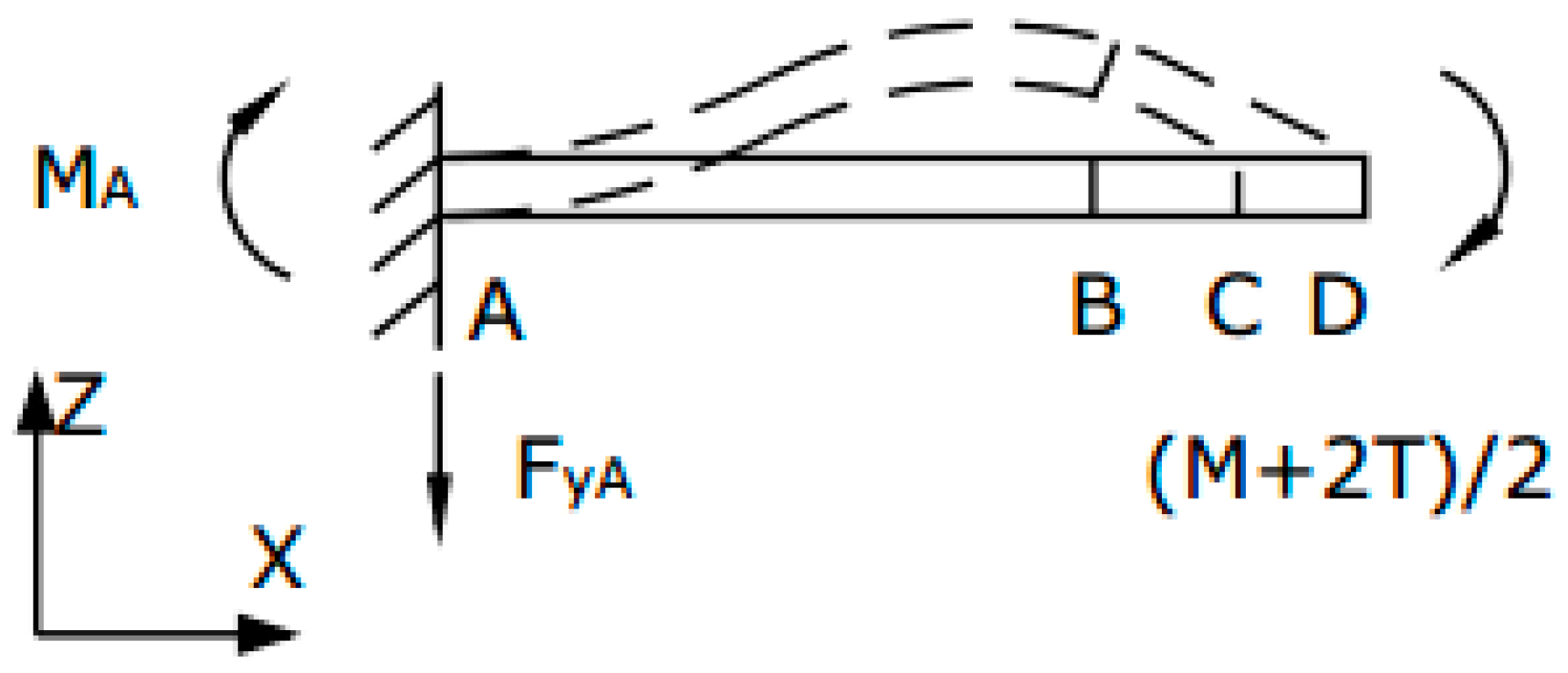
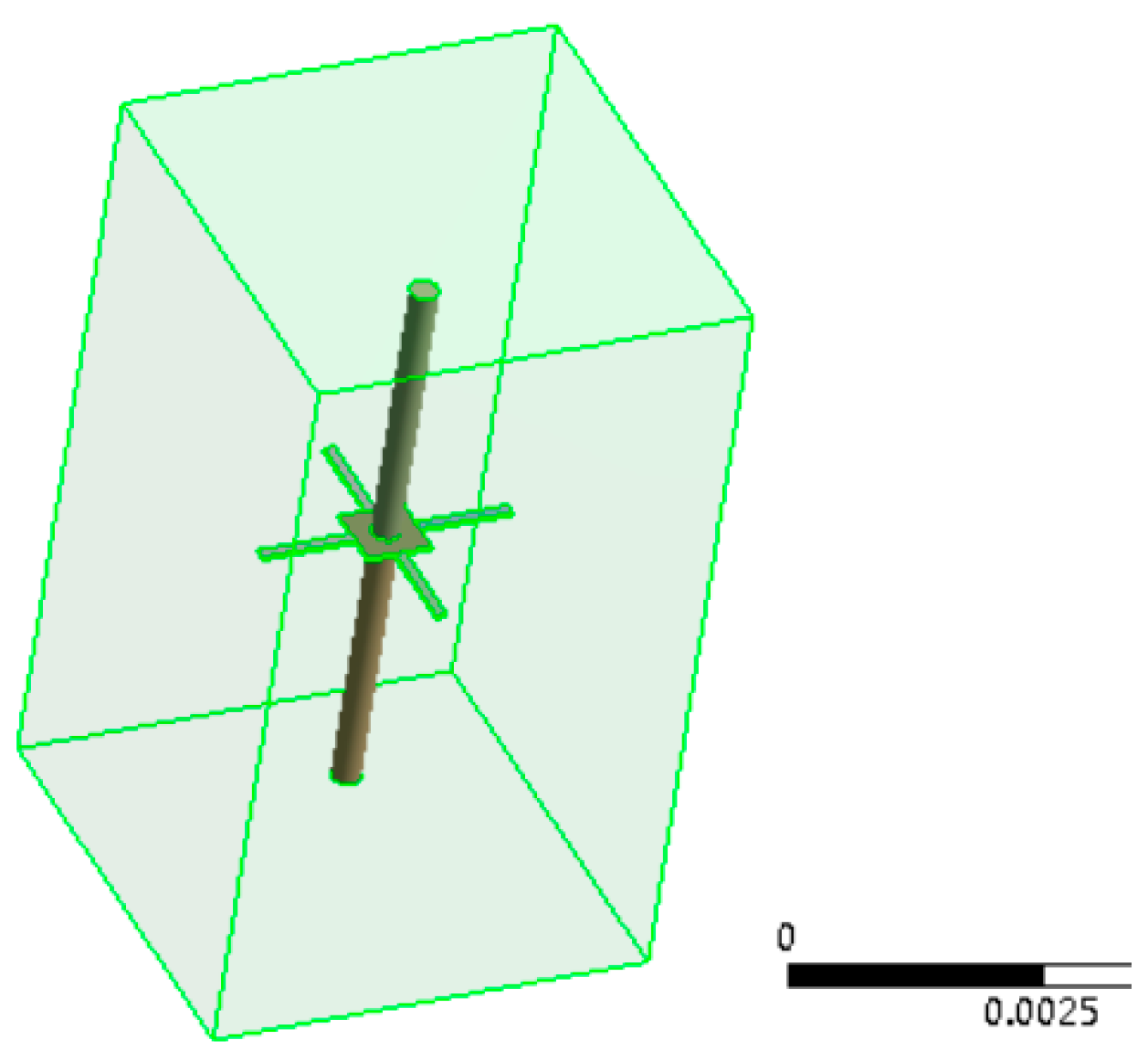
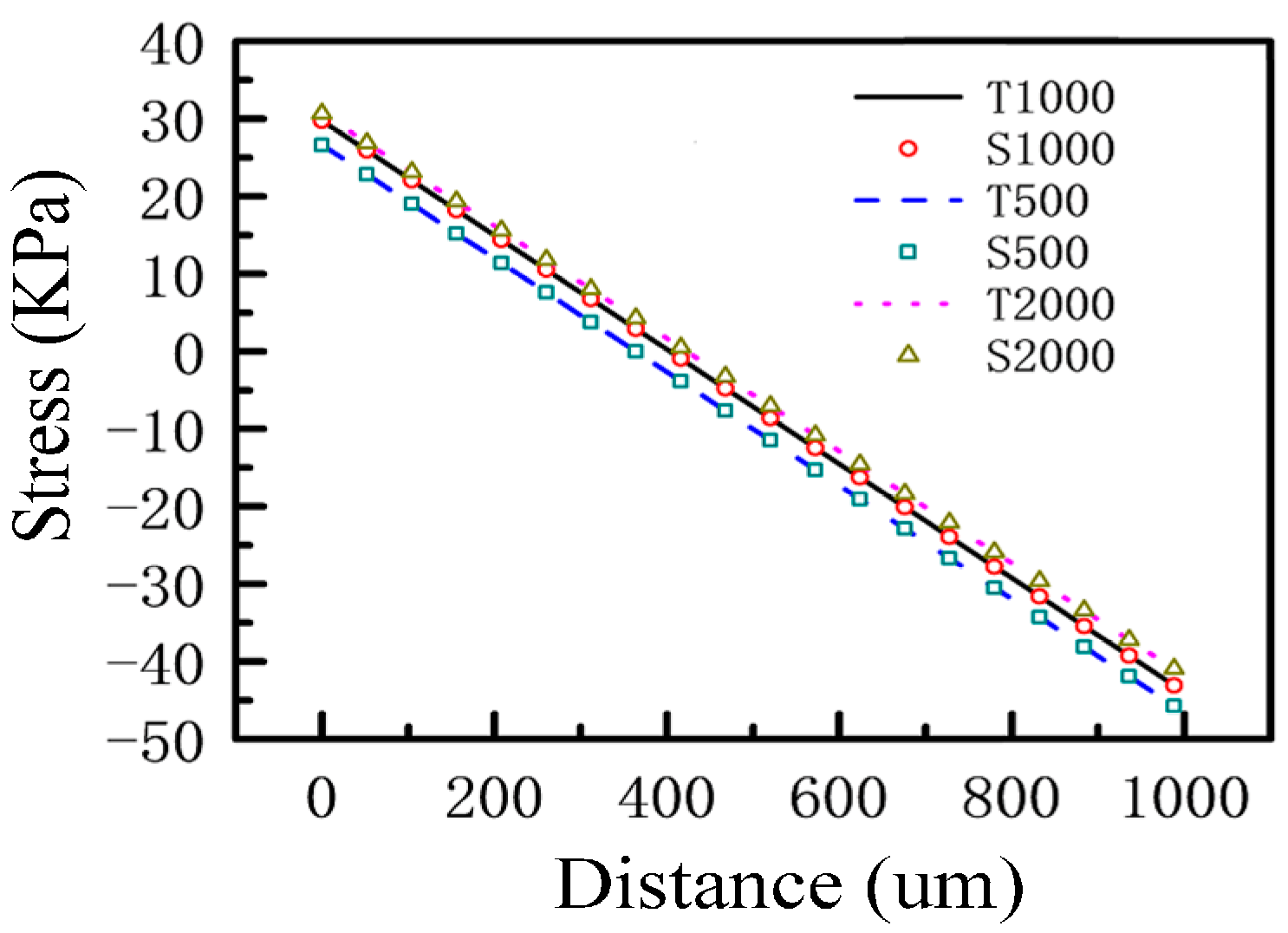
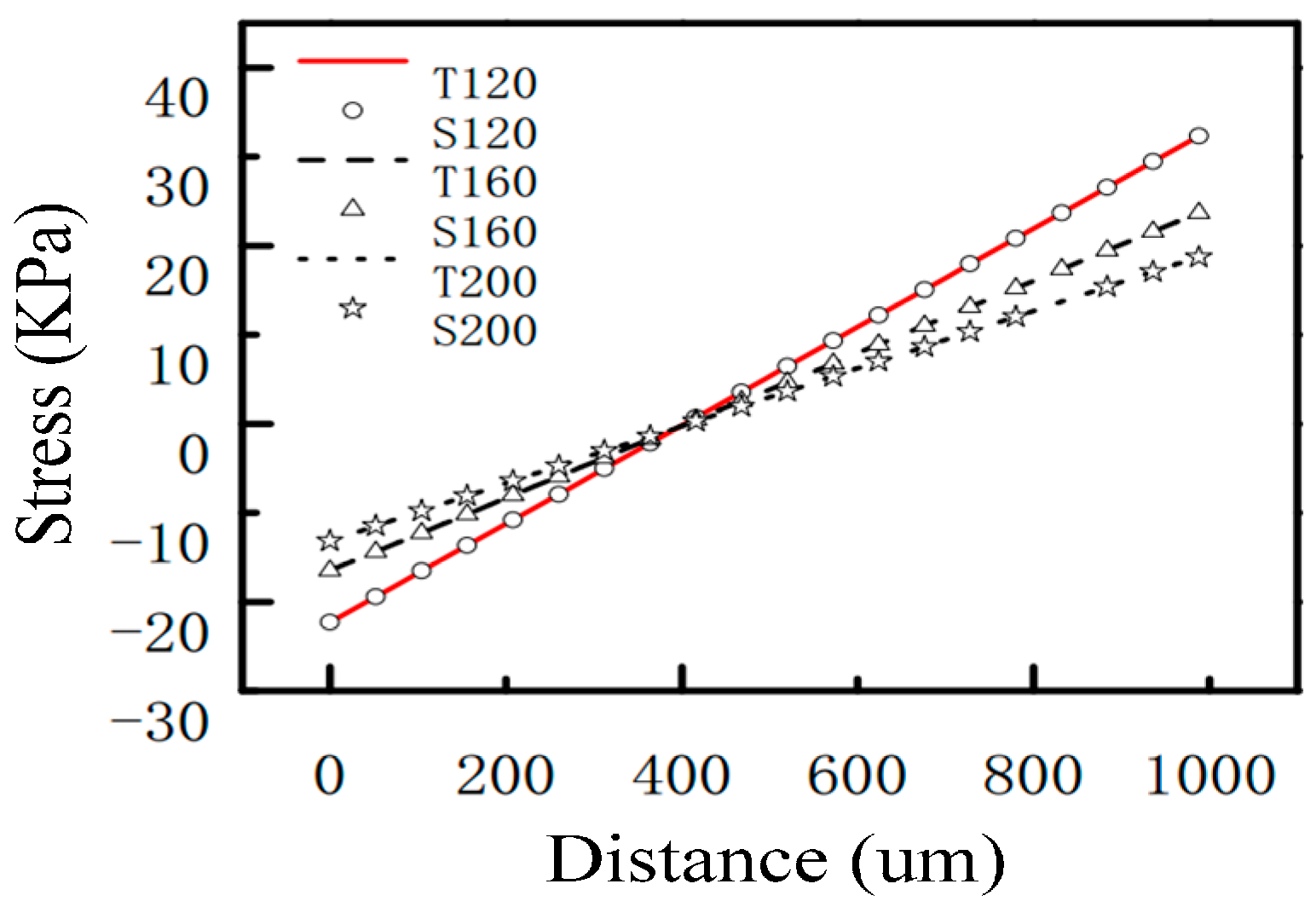

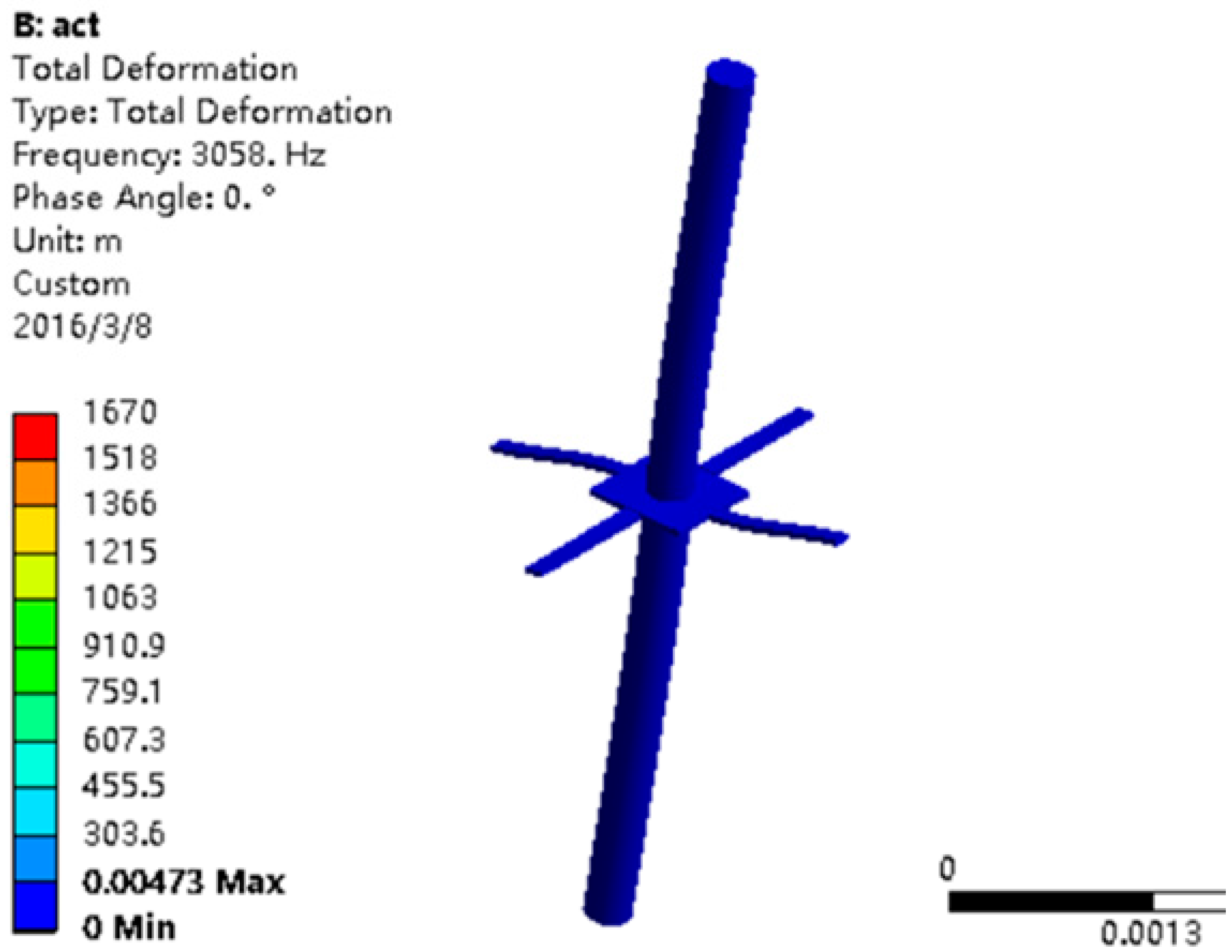
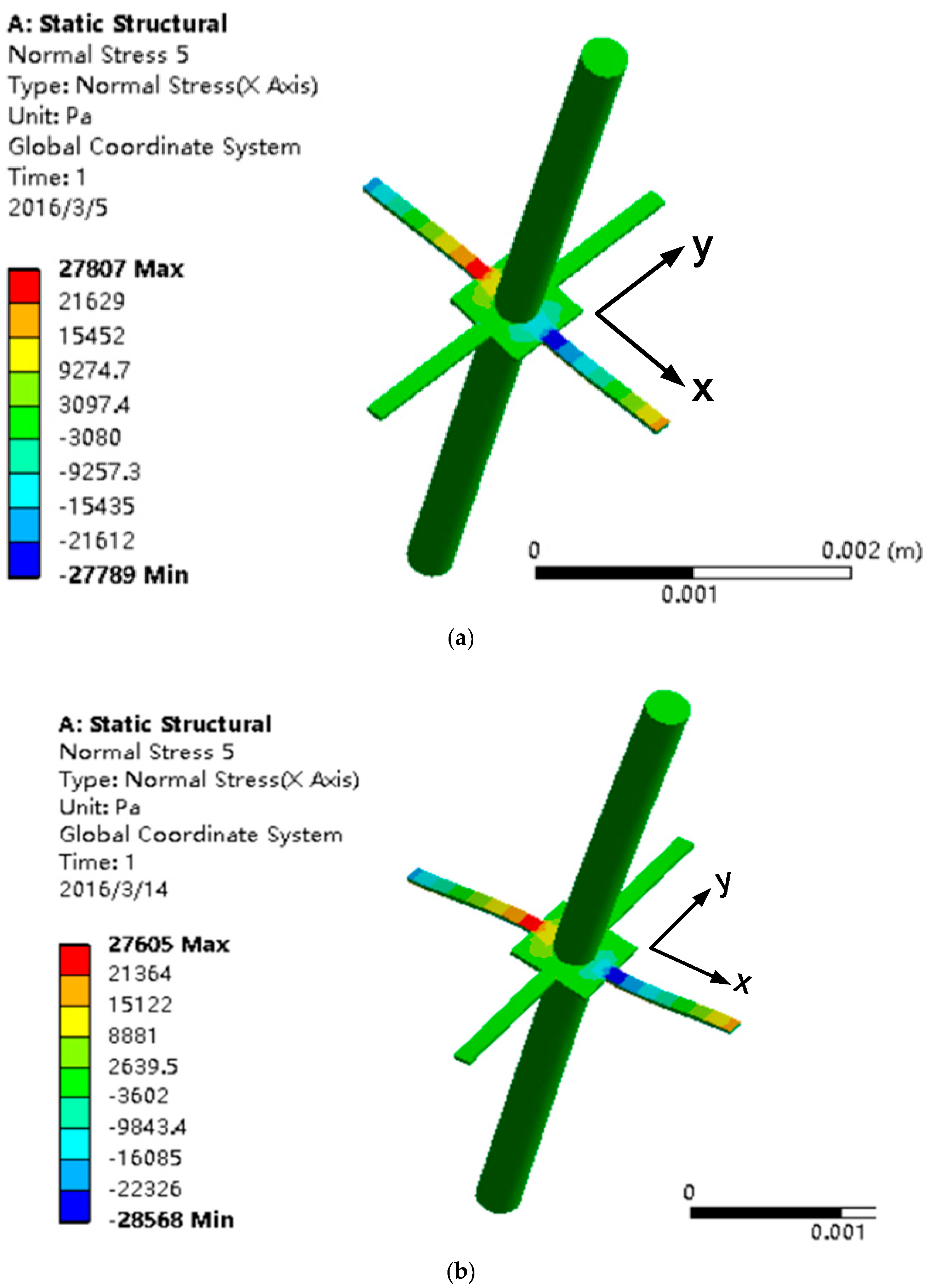
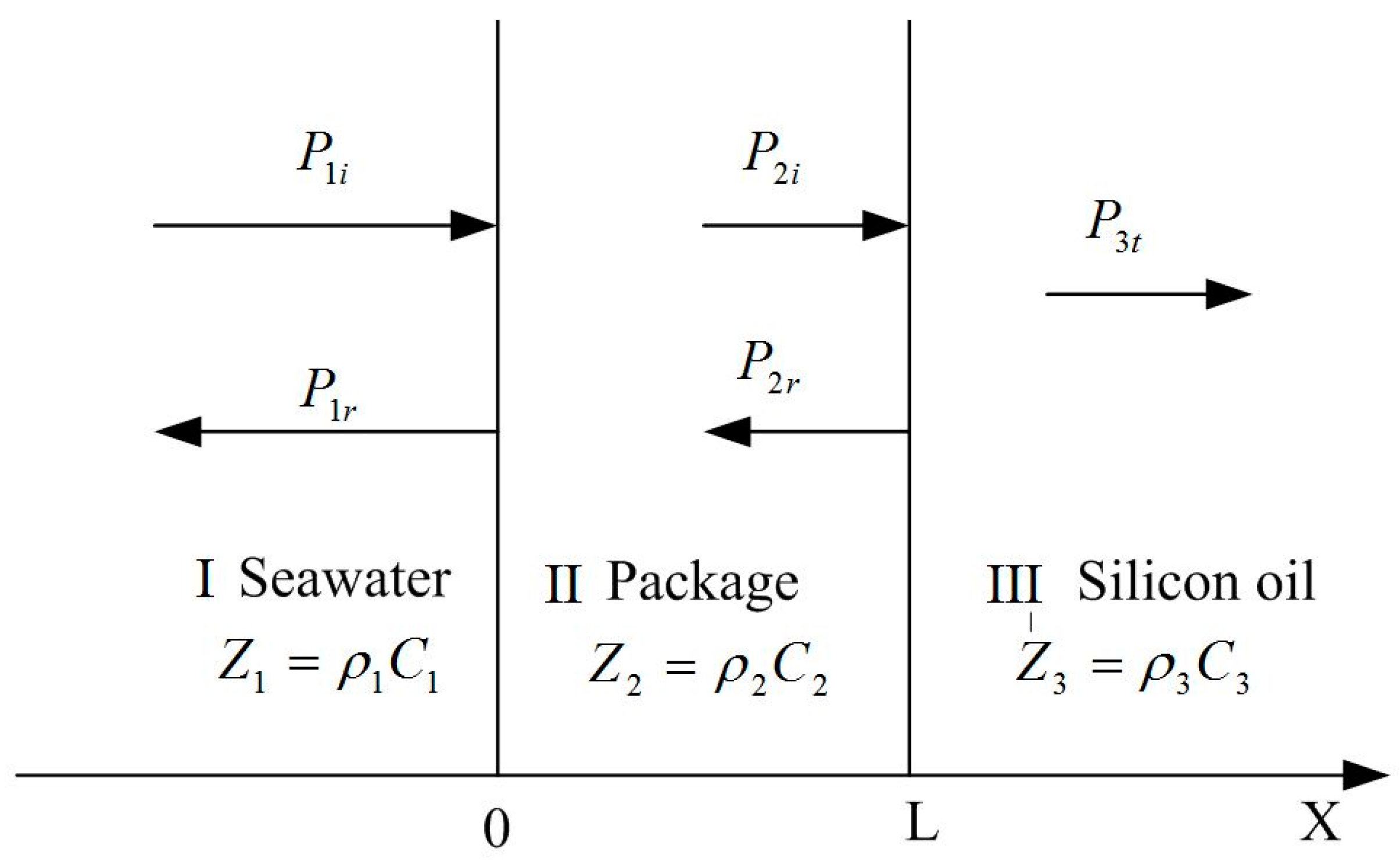

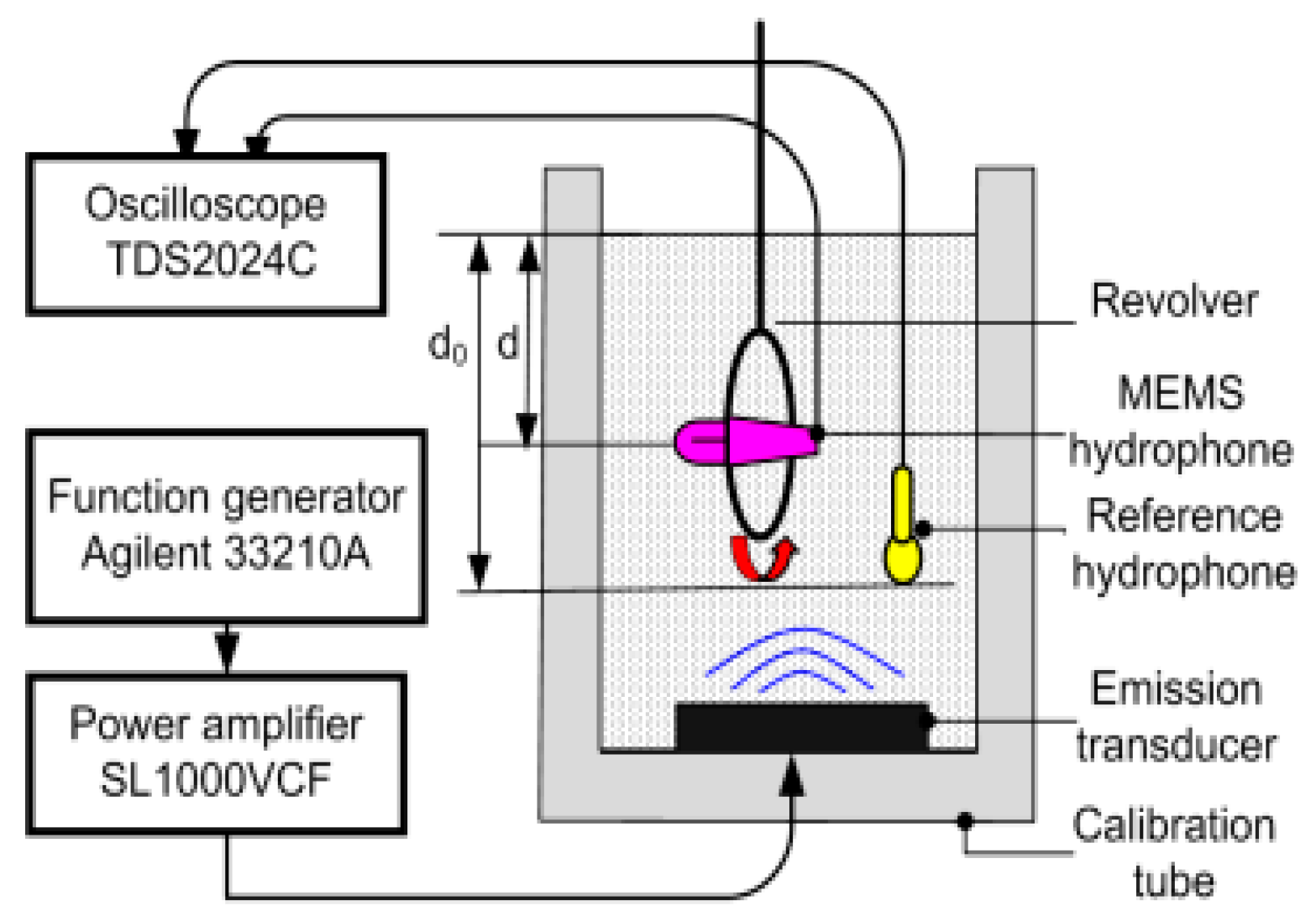
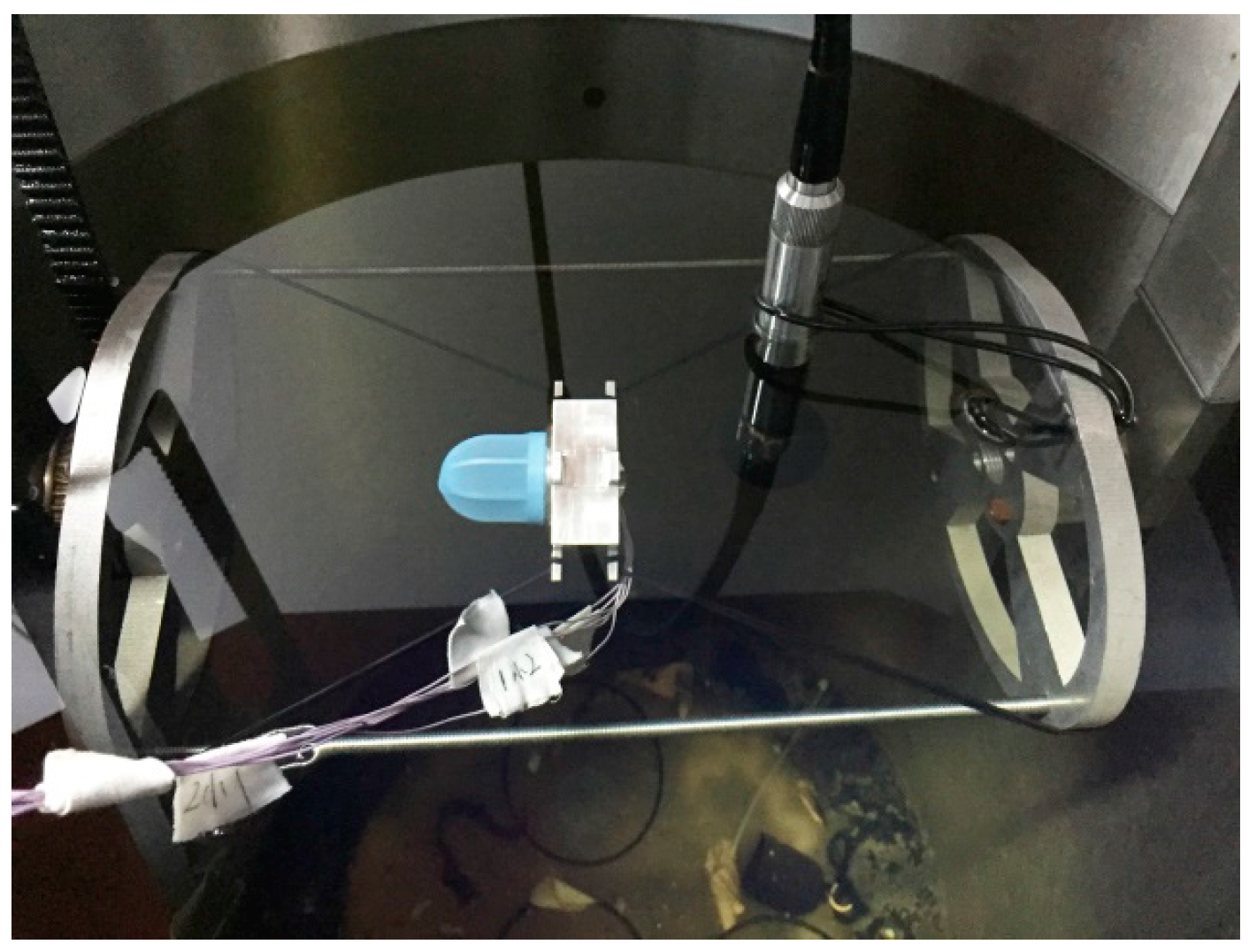
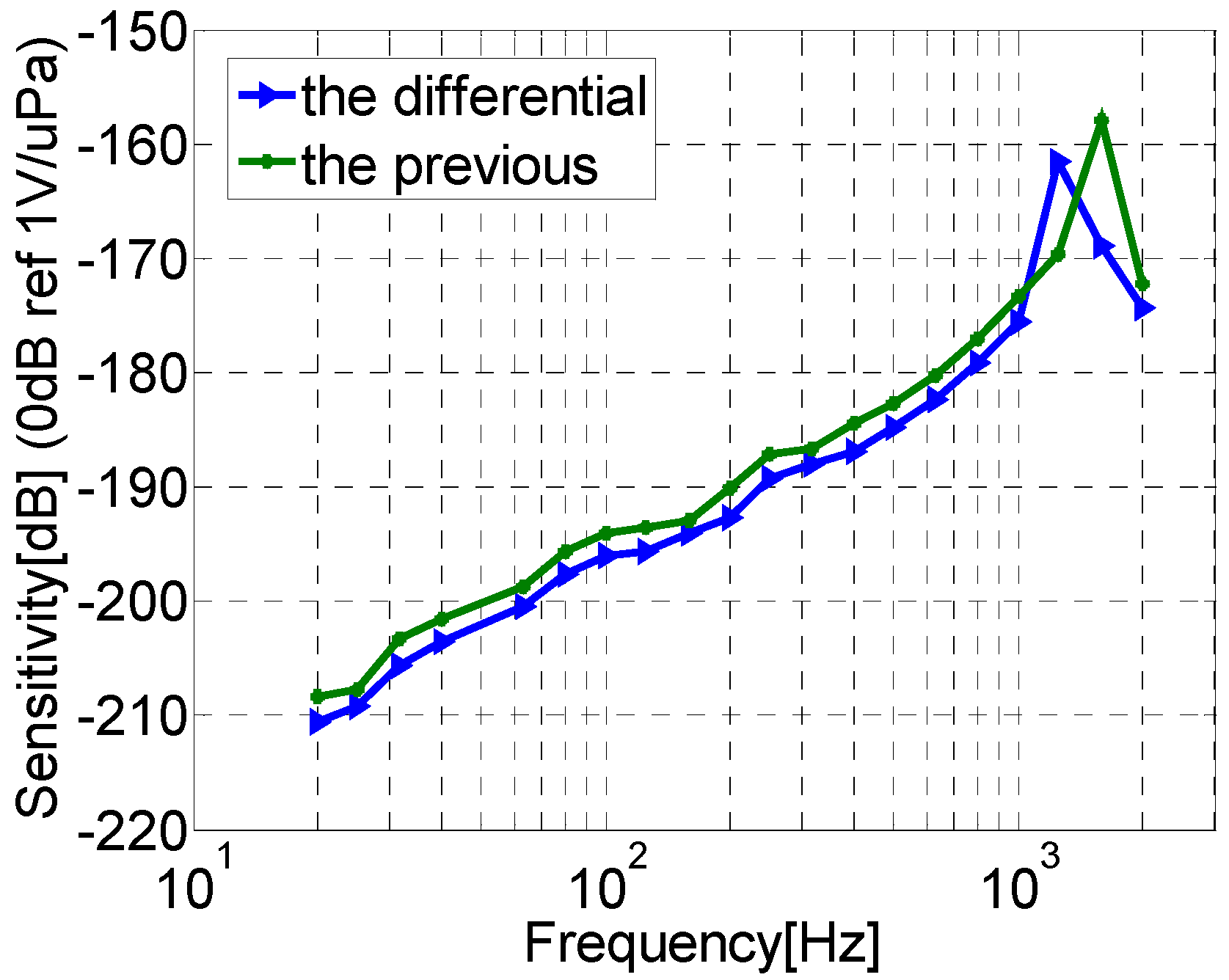
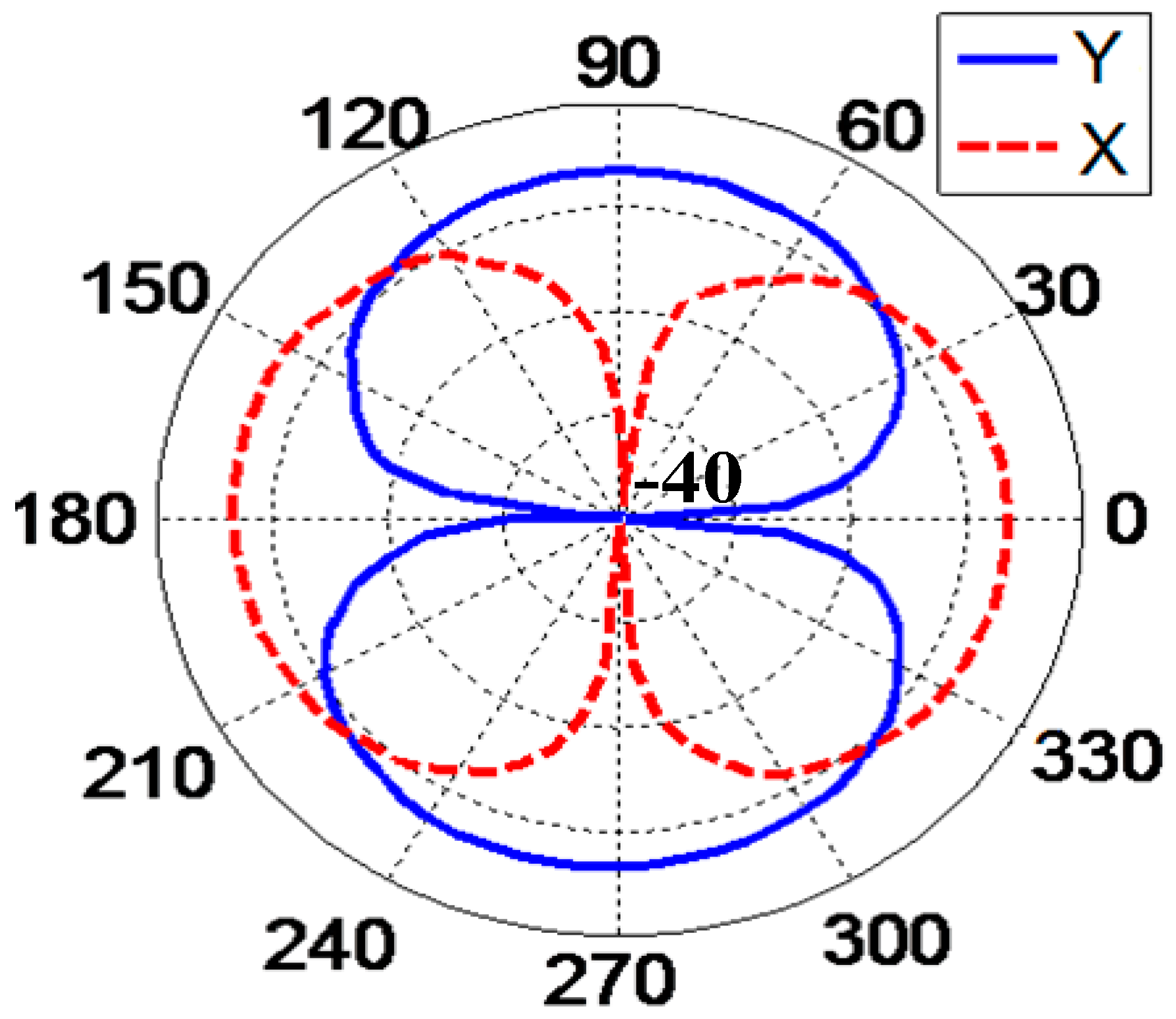

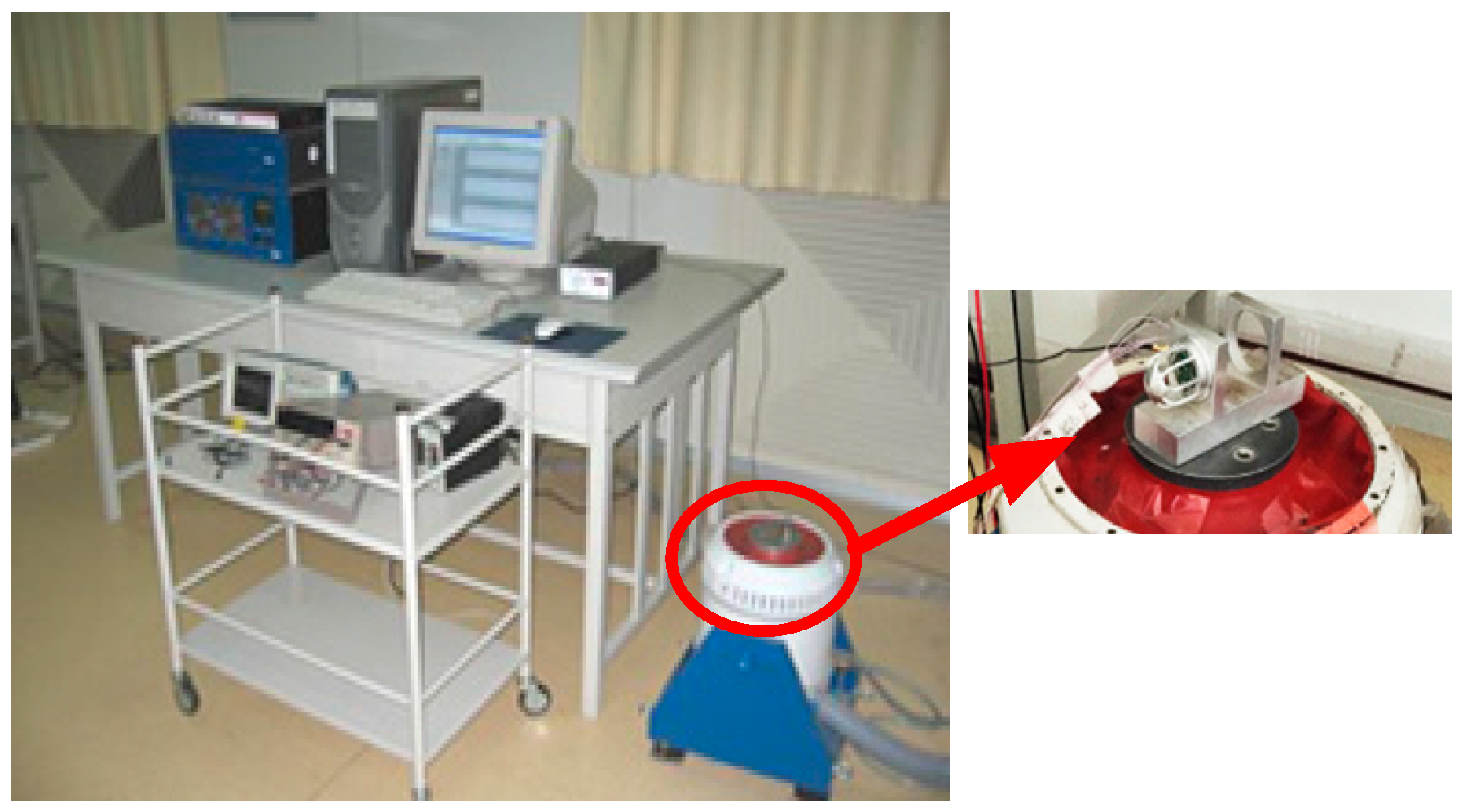

| Parameters | Value |
|---|---|
| Young’s modulus of the four-beam structure | 1.65 × 1011 Pa |
| Density of the four-beam structure | 2330 kg/m3 |
| Young’s modulus of the cilium | 8 × 109 Pa |
| Density of the cilium | 2024 kg/m3 |
| Density of water | 970 kg/m3 |
| Length of Beam (μm) | Theoretical Value (Hz) | Simulation Value (Hz) | Error (%) |
|---|---|---|---|
| 800 | 3449 | 3400 | 1.4% |
| 1000 | 3113 | 3058 | 1.7% |
| 1200 | 2846 | 2799 | 1.6% |
| Width of Beam (μm) | Theoretical Value (Hz) | Simulation Value (Hz) | Error (%) |
|---|---|---|---|
| 100 | 2931 | 2898 | 1.1 |
| 120 | 3113 | 3058 | 1.7 |
| 200 | 3623 | 3610 | 0.6 |
| Thickness of Beam (μm) | Theoretical Value (Hz) | Simulation Value (Hz) | Error (%) |
|---|---|---|---|
| 20 | 1290 | 1269 | 1.6 |
| 40 | 3113 | 3058 | 1.7 |
| 60 | 4361 | 4321 | 0.9 |
| Parameters | Value |
|---|---|
| Length of beam | 1000 μm |
| Width of beam | 120 μm |
| Length of center-block | 600 μm |
| Thickness of beam | 40 μm |
| Radius of cilium | 150 μm |
| Length of cilium | 3000 μm |
| Material | Water | Steel | Aluminum | Plexiglass | Oil | Nitrile Butadiene Rubber |
|---|---|---|---|---|---|---|
| Acoustic impedance (106 kg/m2·s) | 1.48 | 46 | 17 | 3.2 | 1.4 | 1.5 |
© 2017 by the authors. Licensee MDPI, Basel, Switzerland. This article is an open access article distributed under the terms and conditions of the Creative Commons Attribution (CC BY) license (http://creativecommons.org/licenses/by/4.0/).
Share and Cite
Zhang, G.; Liu, M.; Shen, N.; Wang, X.; Zhang, W. The Development of the Differential MEMS Vector Hydrophone. Sensors 2017, 17, 1332. https://doi.org/10.3390/s17061332
Zhang G, Liu M, Shen N, Wang X, Zhang W. The Development of the Differential MEMS Vector Hydrophone. Sensors. 2017; 17(6):1332. https://doi.org/10.3390/s17061332
Chicago/Turabian StyleZhang, Guojun, Mengran Liu, Nixin Shen, Xubo Wang, and Wendong Zhang. 2017. "The Development of the Differential MEMS Vector Hydrophone" Sensors 17, no. 6: 1332. https://doi.org/10.3390/s17061332






